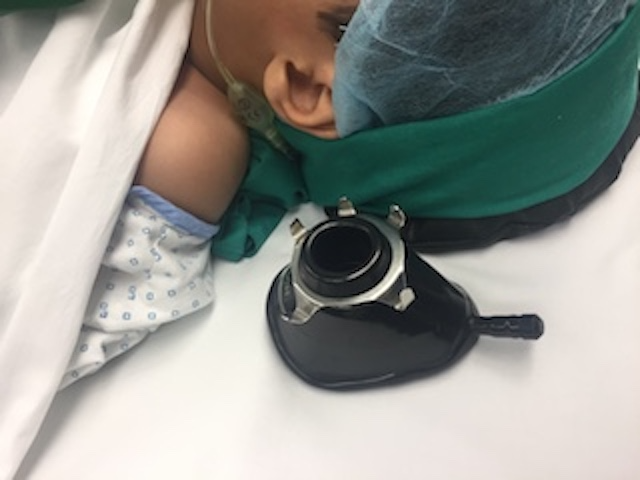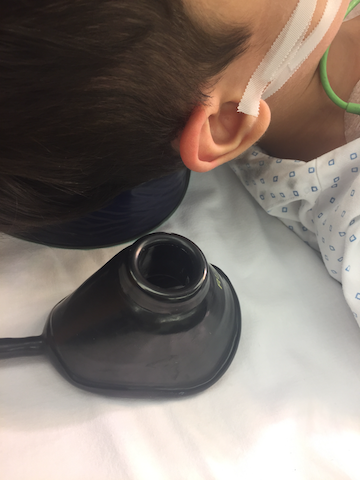Dileep Kumar1, Aly Bahadur2, Fauzia Anis Khan3
1Assistant Professor; 2Resident; 3Professor
Department of Anesthesia, Aga Khan University, Karachi, (Pakistan)
Correspondence: Dr Dileep Kumar, Department of Anesthesia, Aga Khan University, P. O. Box 3500, Stadium Road, Karachi, (Pakistan); Cell # 0092 333 2168948; E-mail: dileep.kumar@aku.edu
Key words: Airway; Facemask; Anesthesia; Laryngeal mask airway
Citation: Kumar D, Aly B, Khan FA. Face mask harness hooks can be dangerous. Anaesth Pain & Intensive Care 2016;20(4):516
Sir,
Facemasks are commonly used worldwide in day to day anesthetic practice. The device allows gas delivery to the patient from breathing system without introducing any apparatus in patient’s mouth.1
Earlier makes of anesthesia facemasks are re-usable and made up of black rubber, consist of a main body, sealing rim, connector and steel hooks (harness hooks). These black rubber masks have almost entirely been replaced by disposable clear plastic masks now a days.2
Since the introduction of laryngeal mask airway in anesthesia practice in 1987,2 the use of the harness hooks for hands free anesthesia has become gradually abandoned,3 however, this type of facemasks are still in practice in many countries. The sharp harness hooks have no role in modern anesthesia practice and may cause injury to patients and the operators (the anesthetists).
The facemask is usually placed beside the patients head to be used before extubation (Figure 1). The semiconscious patient at emergence may have unpredictable head movements that may lead to serious injuries to patient’s face and eyes due to facemask’s sharp harness hooks. This is more common in pediatric anesthesia practice. Similarly, it may cause injury to the anesthetist’s hands while handling the sharp hooks to maintaining a patent airway.

. Figure1: Showing the harness hook in facemask
Safe practice is every patient’s right; resource limited countries need to evaluate this practice. The face masks without hooks are safe. We suggest that the hooks be removed from the facemask before its use (Figure 2) to avoid unwanted injuries to patients and care providers.

Figure 2: Showing the facemask without harness hook
REFERENCES
- Jerry A. Dorsch. Susan E. Drosch. Understanding Anesthesia Equipment. 5th ed , Philadelphia, Pa: Lippincott Williams & Wilkins; 2008; 444-49.
- Paul G. Barash, Clinical Anesthesia, 7th Philadelphia, Pa: Lippincott Williams & Wilkins; 2013:769-770.
- Boyd N, Negus A. Using a facemask during Anaesthesia. Update in Anesthesia. 2011;27:5-9.

